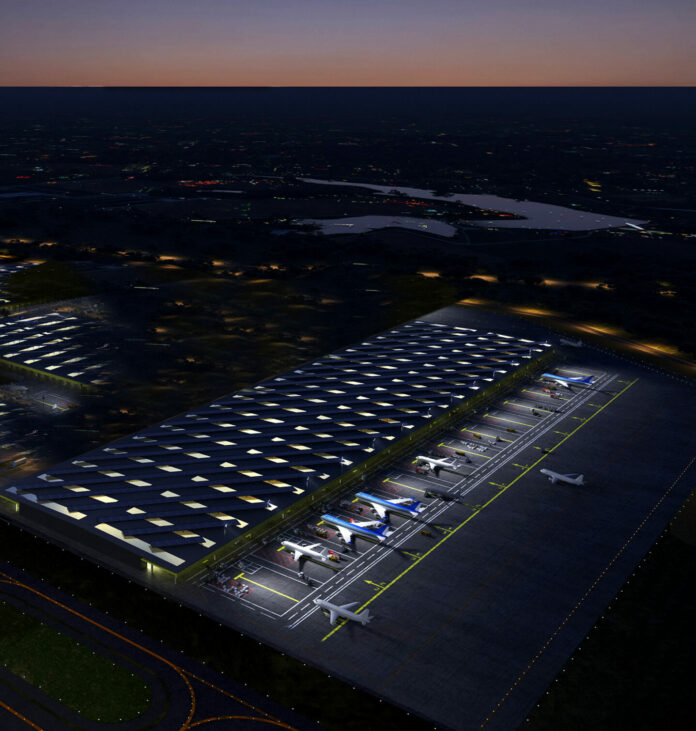

A new gateway is on its way, and it’s set to change the future of air cargo in Australia.
Western Sydney International (Nancy-Bird Walton) Airport will be home to Sydney’s first 24/7 airport when it opens to international, domestic and air cargo services in late 2026.
The airport will open with Australia’s first co-designed cargo hub, offering direct airside access and flexible lots that can be tailored to customer needs and scale as they grow.
In the first stage alone, the space and amenities planned will facilitate the movement of at least 220,000 tonnes of domestic and international cargo through cargo terminal buildings that have capacity of up to 75,000sqm.
With a flexible, future-proofed layout, Western Sydney International’s Cargo Precinct has the potential to grow to 1.8 million tonnes of air cargo annually in the future.
Western Sydney Airport (WSA) CEO Simon Hickey said the airport’s vision is to revolutionise the way cargo is treated within Australian airports, offering the industry a platform for growth and innovation while driving national economic development.
“With a focus on innovation, sustainability and digital opportunities, we’re really redefining what an airport can do for cargo in Australia,” he said.
“It’s a unique greenfield opportunity delivering air cargo businesses the crucial element that has been missing in Sydney – room to grow.
“For the first time in Sydney, all of this will be linked to 24/7 air operations with no movement caps, opening up the city and regional NSW to a new world of opportunities.”
WSA partnered with key players in the cargo industry to collaborate and commence the design concept of its cargo services in 2019.
Earlier this year, it released a registration of interest to air cargo operators to be part of the airport’s cargo community and has now issued an expression of interest to select participants.
The $5.3 billion airport is strategically located close to the city’s major logistics centres in Western Sydney and is backed by $15 billion of supporting infrastructure investment for connecting roads and rail. Western Sydney International’s cargo services will have direct connectivity to Sydney’s motorway network.
Hickey said the air cargo precinct is poised to harness the surging global demand for e-commerce.
“E-Commerce continues to drive significant growth in the air cargo industry and the general consensus is that this shift in consumer behaviour is here for the long term. WSI is perfectly positioned to provide the capacity to meet that demand,” he said.
“The efficient design of our airport and cargo precinct combined with round-the-clock operations and proximity and connections to customer distribution centres is a real game-changer not just for e-Commerce but for local producers across the region and beyond into regional NSW.
“Many of these businesses, typically small to medium and family-owned, will for the first time have the opportunity to tap into lucrative Asian fresh produce markets.”
Hickey said his focus is on building an airport for Western Sydney’s future – the catalyst for the transformation of the region, creating jobs, economic growth and opportunity.
Building a sustainable, energy-efficient airport is a vital piece of that puzzle.
“Sustainability is a key priority to ensure Western Sydney International represents a commitment to future generations,” Hickey said.
Earthworks on the massive 1,780-hectare airport site – twice the area of Kingsford-Smith Airport – have been underway since 2018 with 18 million cubic metres of earth moved. Work to build the terminal is on track to begin in late 2021 and the runway in 2022.









